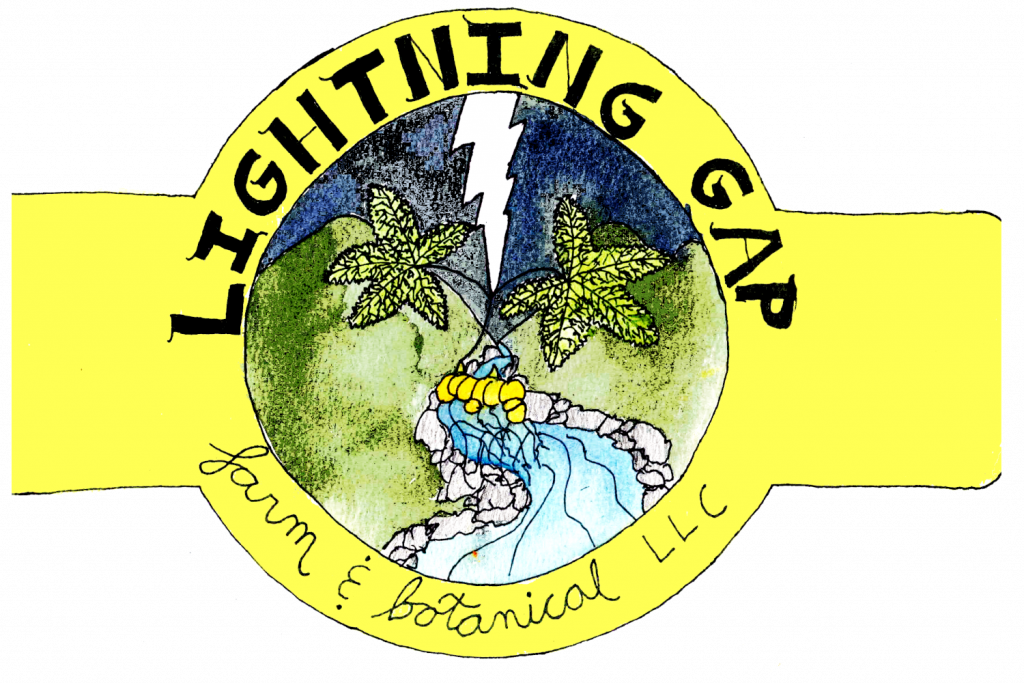Your cart is currently empty!
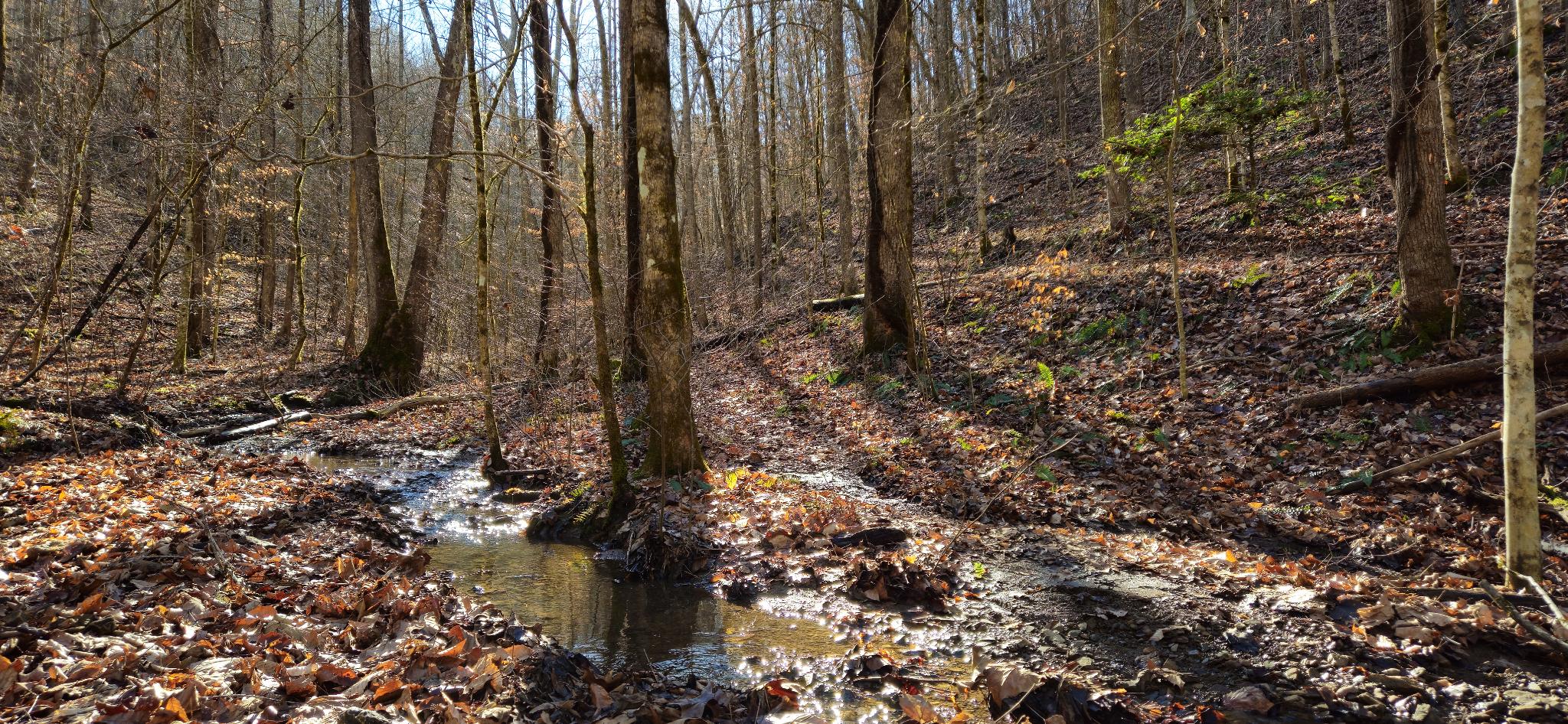
About us
Who we are
Lightning Gap Farm & Botanical LLC. is a worker-owned horizontal farming cooperative located in the hills of southwest Virginia.
What we do
Above all, we live our lives and try to get by while doing right by our plant and animal community members!
We create high-quality, sustainably-grown botanical products. Instead of purchasing herbs wholesale in a market of small & large farmers across the globe, all of our products are made with plants that grew right here. That means our carbon footprint is lower, our sustainability practices are more trustworthy (and not offset by shipping our herbs thousands of miles during the production process), and every time you purchase one of our products, you can rest easy knowing that every person who planted, cared for, harvested, and prepared those herbs got paid fairly for it. Plus, every single one of our tinctures is formulated by our experienced lead herbalist to give you the best extraction and highest quality possible–no one-size-fits-all alcohol concentrations here, unlike some big brands you know :p
Lightning Gap isn’t just good for you and us, either. By supporting us, you’re also supporting medicinal plant access throughout southern Appalachia and beyond via our sister project Appalachian Rhizomes, which provides FREE and at-cost education, plant starts and herbal preparations to independent community groups. Learn more on the Appalachian Rhizomes site (coming soon).
The Forest
We truly believe that we live in the most beautiful place on planet earth. Our forest is a diverse community of 3rd and 4th growth mixed deciduous trees, under which live thousands of species of woodland plants, fungi, and wildlife (and a few humans, but we’re working on becoming wildlife too.)
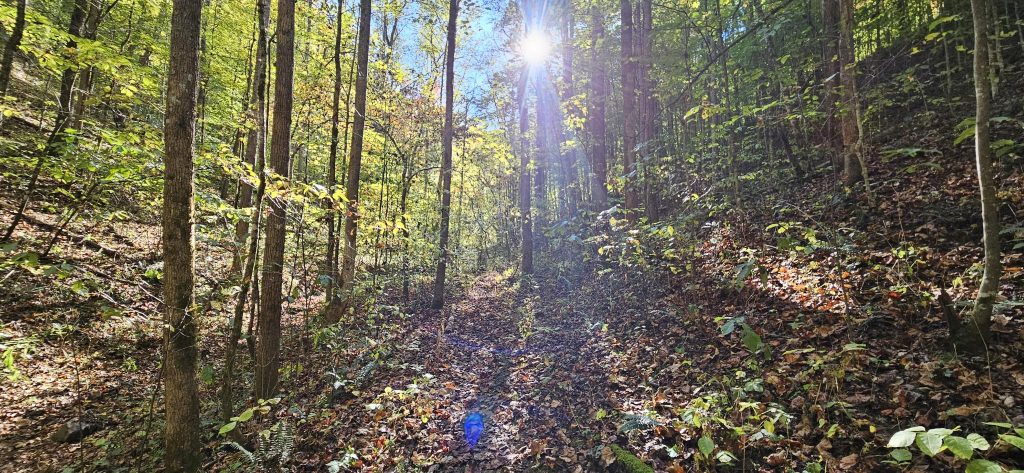
Stretching over 50 acres between two ridges, our forest is home to diverse wildlife including several species of salamanders, frogs and crawdads; songbirds and birds of prey including great-horned owls, red tail hawks and even the occasional bald eagle as well as many turkey, crows and ravens; many white-tailed deer; medium-sized scavenging mammals like skunks, opossums, and raccoons; preyed on by foxes, coyote, and–we are pretty sure–a bobcat; a black bear; and we are absolutely chockablock with eastern box turtles! Smallest in size but greatest in number, we are proud neighbors–and frequently food–to millions of insects, bugs, and other macro- and micro-invertabrates. Under the canopy, diverse ecological niches flourish depending on overstory, sun angle and slope direction, grade, elevation, position in the watershed, and occasionally our own interference. These include a creek and many gullies lined thick with wood nettle, multiple springs and seeps full of salamanders and sedges, a canebreak (i.e. a stand of rivercane, our continent’s only native bamboo!), rocky ridgetops with ancient oak and beech trees playing host to beechdrops, bear cones, ghost pipe, and pinesaps, and a whoooole lot of deep, damp, heavily shaded areas with little undergrowth that are especially hospitable to rhizomatic plants like goldenseal, ginseng, bloodroot, trillium, and solomon’s plume. Mushrooms flourish in the humidity, from wild morels to our outdoor-cultivated lion’s mane and shiitake.
The spring ephemerals will knock your socks off.
We also have a 1-acre full-sun garden clearing, where the vast majority of trees (predominantly tulip poplar) that we felled now flourish as coppices, eating up the sunlight, holding the hillside in place with their roots, and providing lots of easily-harvestable, fast-renewing bark and basketstock. Our sun-loving and non-native herbs grow alongside our garden veggies alongside a huge assortment of local volunteers, sprawling mousebeans, and a veritable vinyard of native grapes. (we don’t believe in “weeds”, here). Insects like dragonflies and native beetles frolic alongside small reptiles like lizards, ring-neck snakes, and our beloved terrapins.
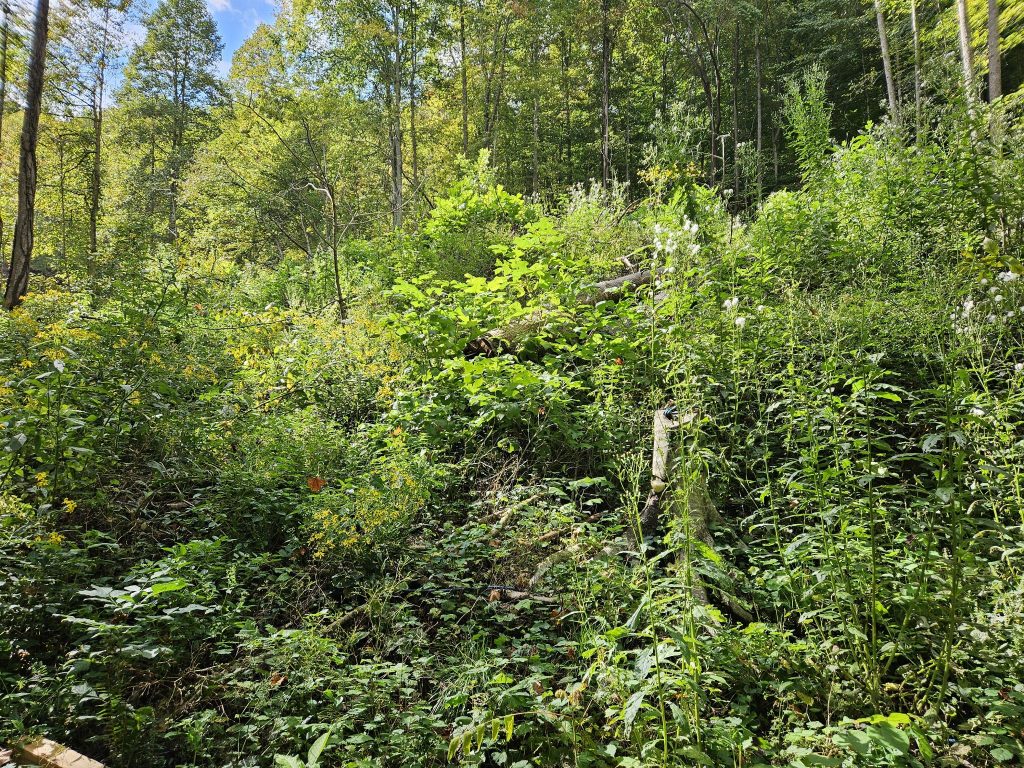
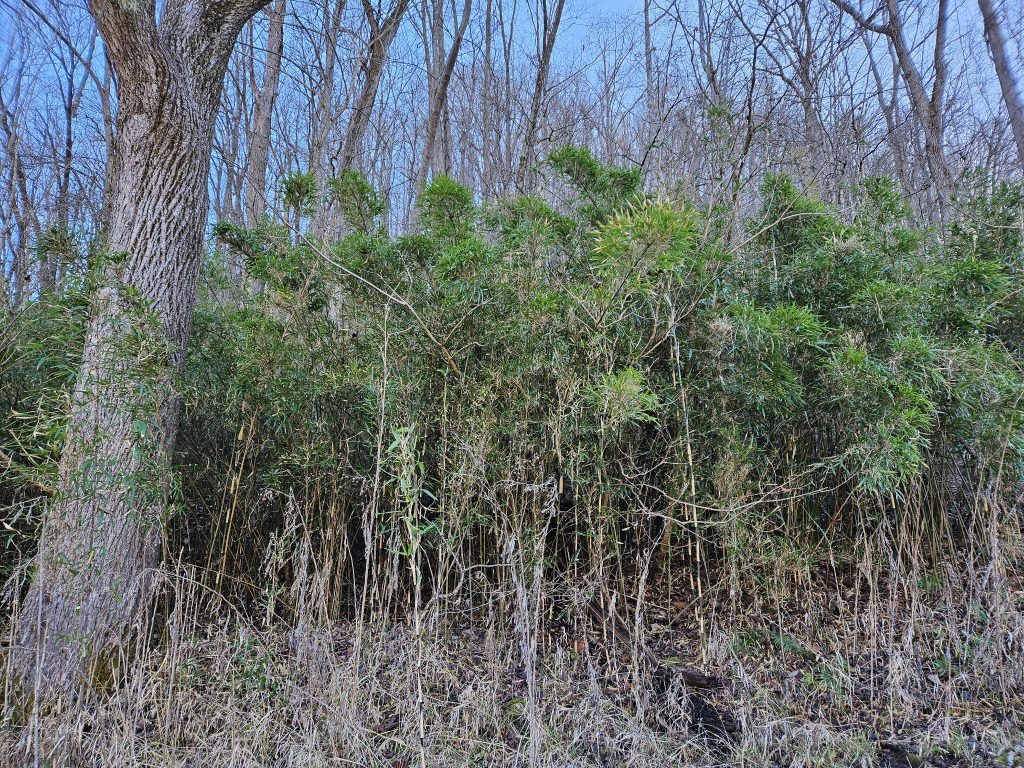
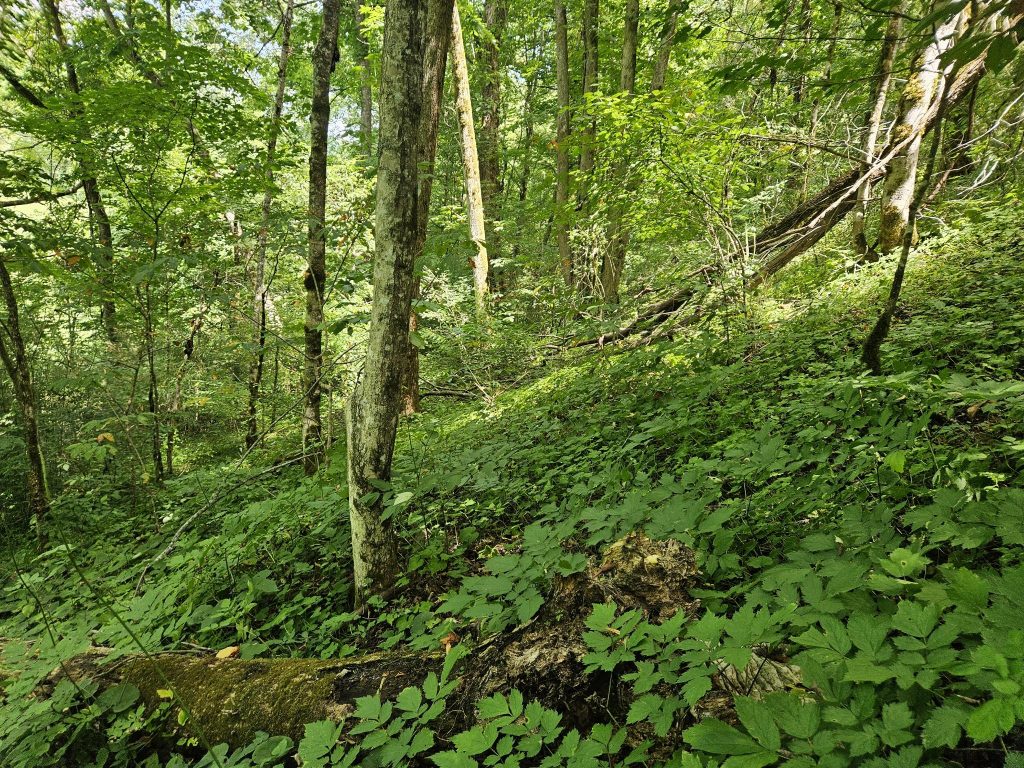
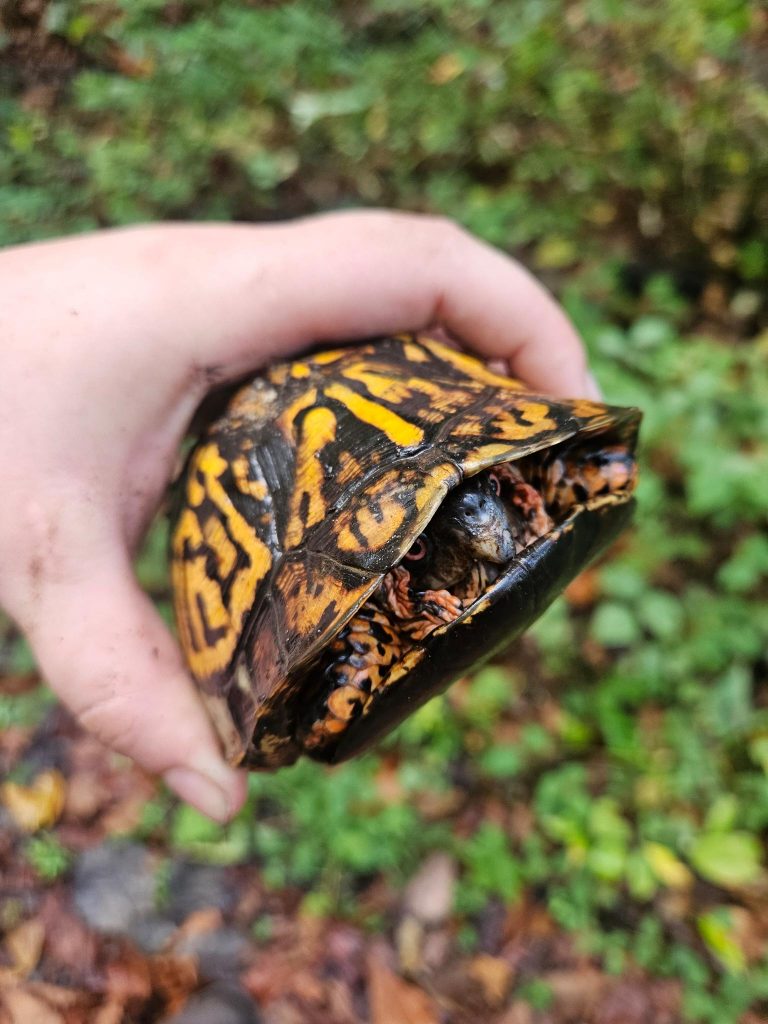
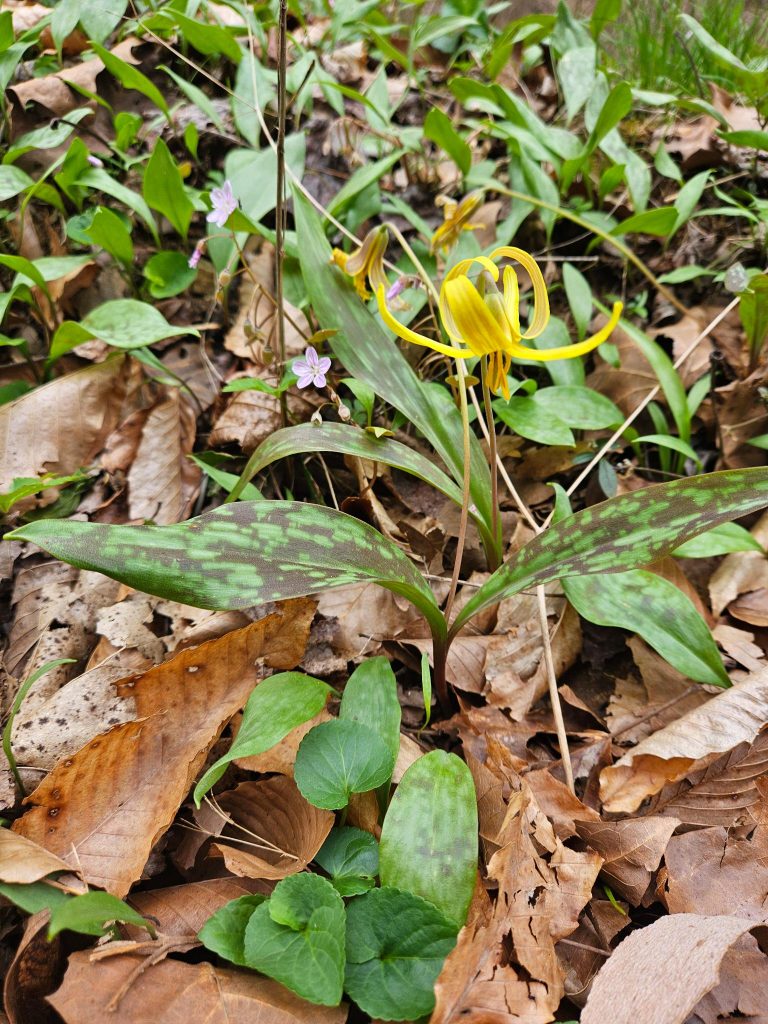
Suffice to say, it is a lot to love, care for, and share with. Our forest comes first.
We do not grade, monocrop, or use heavy machinery in our harvests. We care for the entire ecosystem–not just the parts that are profitable to us. We use harvests as an opportunity for stewardship, helping plant communities maintain adequate spacing for growth and to resist disease. We harvest after rains, making sure conditions are right for the plants we take from to recover. Outside of harvest seasons, we collect and sow seed to support the plants in reproducing new individuals and maintaining genetic diversity. We do not use pesticides, herbicides, or synthetic fertilizer in any of our growing or stewardship.
